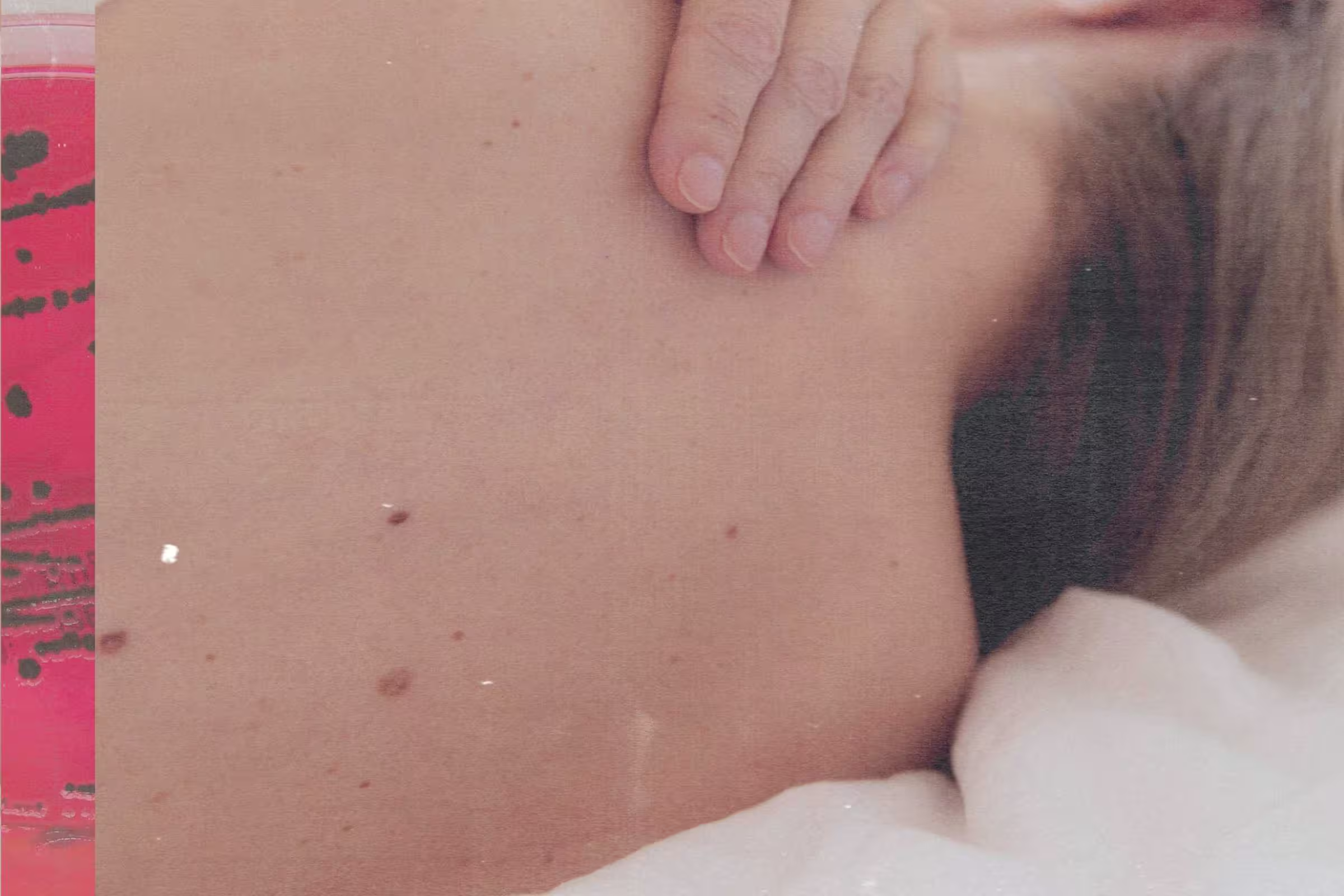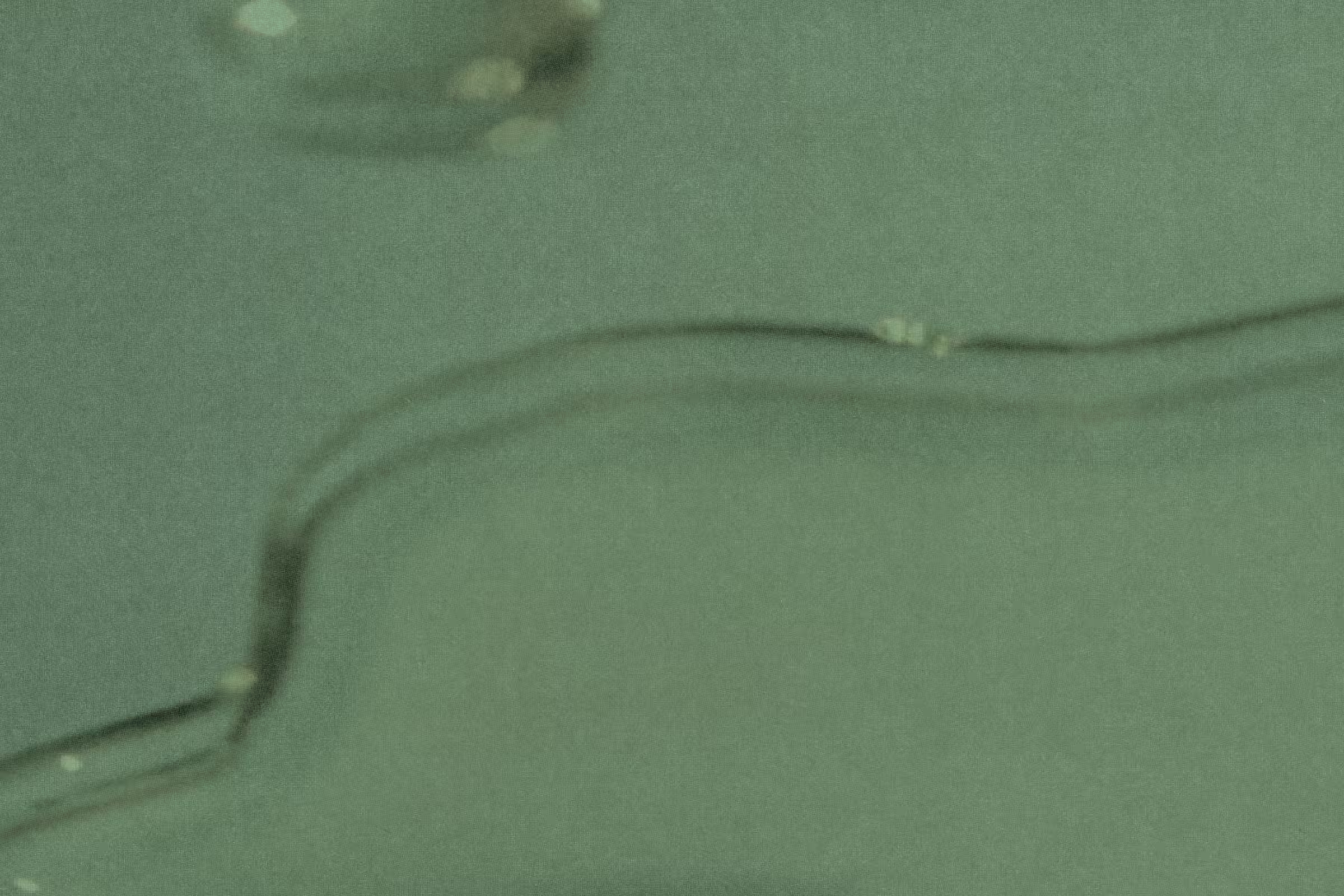

Vaginal Dryness After Yeast Infection: Causes, Treatment, and Relief
Learn why vaginal dryness may persist after a yeast infection, safe relief options, and when Evvy testing and probiotics can provide targeted care.
Words by Olivia Cassano
Scientifically edited by Dr. Krystal Thomas-White, PhD
Medically reviewed by Dr. Kate McLean MD, MPH, FACOG
Dealing with a yeast infection can be frustrating enough, but what happens when you’ve kicked the infection and now you’re experiencing vaginal dryness? Vaginal dryness after a yeast infection is more common than you might think, and in some cases, it can stick around longer than expected.
When the good bacteria, like Lactobacillus, drop in numbers, your pH levels can shift, which might lead to ongoing inflammation and make it harder for natural lubrication to come back. For some, factors like hormonal changes after childbirth, during perimenopause, or even certain types of birth control can make this dryness more noticeable or lengthen the recovery time.
Understanding what's causing the dryness can help you find the right solutions. Consider trying vaginal microbiome testing, like Evvy, to get a clearer picture of any imbalances or inflammation that might be slowing down your healing. In the meantime, there are plenty of gentle, science-backed tips and tricks to help you feel more comfortable and support your vaginal health while your body gets back on track.
What is a yeast infection?
A vaginal yeast infection, also known as vaginal candidiasis, happens when there’s an overgrowth of a fungus called Candida, most commonly, Candida albicans. This fungus is naturally present in the body, including in the vagina, but it can multiply and cause an infection under certain conditions. Common symptoms include:
- Intense vaginal itching or irritation
- Thick, white vaginal discharge (often described as resembling cottage cheese)
- Redness or swelling
- A burning sensation when you pee or have sex.
Yeast infections are incredibly common, with many women experiencing at least one in their lifetime. While they’re not typically serious, they can be incredibly uncomfortable.
What causes vaginal dryness?
Vaginal dryness happens when your vaginal tissue doesn’t produce or retain enough natural moisture, resulting in irritation, burning, painful sex, or just an overall “off” feeling.
While a lot of people associate dryness with menopause, it can actually happen at any age. Hormone fluctuations, certain medications, underlying health conditions, and even everyday products can all play a role.
The good news is that once you understand what’s causing the dryness, you can take steps to fix it. Sometimes that means switching to a gentler product or adjusting your hydration and sleep habits. Other times, it’s a conversation with your healthcare provider about your hormones or medications. Either way, you don’t have to just “deal with it” — there are solutions that actually work.
Hormonal changes
Estrogen is like the MVP for keeping your vaginal mucosa healthy, elastic, and naturally lubricated. So when estrogen levels decrease (during postpartum recovery, breastfeeding, perimenopause, menopause, or even on certain birth control methods), it’s common to notice dryness, irritation, or discomfort during sex. Sometimes these changes are temporary (like after giving birth), and your body naturally rebalances. Other times, especially during menopause, you may need extra support like moisturizers, lubricants, or hormone-based treatments to keep things comfortable.
Medications and irritants
Some everyday meds can mess with your natural lubrication. Antihistamines (allergy meds), SSRIs (commonly prescribed for anxiety or depression), and certain acne treatments can all dry out mucous membranes, including vaginal tissue. On top of that, scented washes, fragranced wipes, or douches can irritate your vagina and throw off your natural microbiome.
Stick with fragrance-free, pH-balanced products and chat with your doctor if you think your meds are making dryness worse. A simple tweak can make a big difference.
Health conditions and lifestyle
Sometimes vaginal dryness is your body’s way of waving a little flag that something else is going on. Autoimmune conditions like Sjögren’s syndrome can reduce moisture production, while chronic stress, poor sleep, and dehydration can all make dryness worse.
Supporting your overall health (staying hydrated, managing stress, and actually getting enough rest) can help your body stay balanced.

Recurrent symptoms? Get Evvy's at-home vaginal microbiome test, designed by leading OB-GYNs.
Why you might experience vaginal dryness after a yeast infection
Yeast infections are typically associated with itching, irritation, and that telltale discharge, but for many people, vaginal dryness lingers even after the infection clears. That’s because a yeast infection doesn’t just cause short-term discomfort; it can also throw off the balance of your vaginal microbiome and irritate the delicate tissue in ways that take time to recover.
Post-infection dryness has multiple causes: shifts in your vaginal flora, residual inflammation from treatment, hormonal fluctuations, and temporary changes in pH that affect your natural lubrication. Understanding which factor (or combination of factors) is at play is the first step toward relief, and, in many cases, preventing it from happening again.
Microbiome imbalance after infection
Your vaginal microbiome plays a huge role in keeping things comfortable and well-lubricated. During and after a yeast infection, the balance of healthy Lactobacillus bacteria often takes a hit. This loss can trigger inflammation and disrupt the natural lubrication process. If you’ve recently taken antibiotics for another infection (like bacterial infections), this imbalance can be even more pronounced.
Testing your vaginal microbiome with Evvy can help you understand exactly what’s happening in your flora, so you can take steps, like using targeted probiotics or medical treatments, to restore balance and reduce vaginal dryness more quickly.
Treatment and tissue irritation
Yeast infection treatments, while effective, can sometimes upset the balance of healthy bacteria and fungi in the vagina. This disruption can result in vaginal dryness until the flora rebalances. This irritation can linger for a few days or even weeks, leading to dryness, sensitivity, or discomfort.
Overlapping hormonal factors
Low estrogen levels can make post-infection dryness more noticeable. If you’re postpartum, breastfeeding, in perimenopause or menopause, or using certain hormonal contraceptives, your vaginal mucosa may already be thinner and produce less natural lubrication. When a yeast infection and treatment are added to the mix, recovery can take a little longer, and ongoing vaginal dryness may need more active management—like moisturizers, lubricants, or hormone-supportive therapies.
Overwashing
When you’re dealing with a yeast infection, it’s tempting to use wipes or fragranced washes to feel “clean” or to remove discharge or leftover antifungal cream. But overwashing often does more harm than good. Harsh or scented products can strip away protective moisture, irritate sensitive tissue, and prolong dryness. Instead, stick to the basics: rinse gently with warm water, and if you really need to, use a mild, unscented soap externally — never inside the vagina.
How to treat vaginal dryness after a yeast infection
The good news is that both conditions are treatable, and with a little care, you can get back to feeling comfortable.
Yeast infections are typically treated with antifungal medications, which can be purchased over the counter or prescribed by a healthcare provider. They come in the form of creams, suppositories, and oral medications.
For milder cases, over-the-counter choices like miconazole or clotrimazole are usually quite effective. If your infection is stubborn or more severe, your doctor might suggest a dose of oral fluconazole or a longer treatment plan. Research also shows that boric acid suppositories are effective in treating recurrent or non-albicans infections.
While you're on the mend, it’s a good idea to steer clear of irritants like scented products, sexual intercourse, or wearing tight, synthetic clothing — while they don't directly cause a yeast infection, these can make things worse.
Vaginal dryness, on the other hand, is treated through a combination of approaches aimed at restoring comfort and hydration to the vagina:
- Moisturizers: Vaginal moisturizers (like Evvy’s Hyaluronic Acid Suppositories) can provide immediate relief from vaginal dryness. They're an excellent option if you’re looking for a non-hormonal solution.
- Lubricants: Lubricants are useful for reducing discomfort during sexual activity. They can make penetration more comfortable and pleasurable. Opt for a water-based, fragrance-free lube.
- Hormonal therapy: Hormonal therapies, such as an estrogen cream or vaginal ring, are often recommended for vaginal dryness caused by hormonal changes like menopause.
When to seek medical advice
If you’re unsure whether your symptoms are from a yeast infection, vaginal dryness, or something else, it’s always a good idea to consult your healthcare provider. They can rule out other potential issues and recommend the best course of treatment for you.
FAQ
Why does a yeast infection cause dryness?
A yeast infection can trigger vaginal dryness because of the inflammation and irritation it causes in the vaginal mucosa. During the infection, the body mounts an immune response that can make the vaginal mucosa swollen and sensitive. Even after the itching and discharge clear, the inflammation can linger, leaving tissues feeling dry or less elastic. On top of that, a yeast infection often disrupts the vaginal microbiome, reducing the amount of protective Lactobacillus bacteria that help maintain natural lubrication. Until your flora rebalances and the tissue fully heals, dryness and discomfort are common. For some people, these symptoms resolve quickly; for others, it may take a few weeks for the vaginal environment to fully recover.
Does yeast infection medication cause vaginal dryness?
Yes, some yeast infection treatments can contribute to vaginal dryness, at least temporarily. Topical antifungal creams or suppositories can sometimes irritate delicate vaginal mucosa, especially if used multiple times over several days. Oral antifungal medications, while effective, can also disrupt the vaginal microbiome, leading to less natural lubrication until balance is restored. This doesn’t mean you should skip or stop treatment, but it does explain why you might feel dry or uncomfortable even after the infection clears. Usually, this dryness improves on its own within a week or two.
Is it normal to be dry after a yeast infection?
Yes. While uncommon, it’s normal to experience vaginal dryness after a yeast infection. This can happen for a variety of reasons. The infection itself often causes inflammation and irritation, which may leave the vaginal tissues feeling sensitive and dry even after the infection has cleared. Additionally, antifungal creams and oral medications can sometimes disrupt the natural balance of the vaginal microbiome, temporarily affecting vaginal lubrication. Hormonal fluctuations or other factors that contributed to the yeast infection might also play a role in post-infection vaginal dryness. While it’s usually a temporary issue, if vaginal dryness persists or causes significant discomfort, it’s a good idea to consult a healthcare provider for advice.
Why have I suddenly gone dry down there?
Sudden vaginal dryness can happen for several reasons, and it’s often linked to changes in your body or environment. Hormonal shifts are one of the most common causes, such as when estrogen levels drop during menopause, breastfeeding, or postpartum recovery. Certain hormonal birth control methods (like birth control pills) can also affect hormone levels. Stress can also play a significant role, as it affects your body’s overall balance and can impact natural lubrication. Medications like antihistamines or antidepressants sometimes have vaginal dryness as a side effect. If the dryness persists or is accompanied by other symptoms, it’s worth consulting your doctor to determine the cause and explore treatment options.
How long does it take to go back to normal after a yeast infection?
It really depends on how bad the infection was and how your body reacts to treatment. Usually, most women start to notice relief from symptoms like itching, irritation, and unusual discharge within just a few days after starting treatment. If you're using over-the-counter antifungal creams or suppositories, you can expect the infection to clear up in about three to seven days. If you've been prescribed oral antifungal meds like fluconazole, it might take a little longer for symptoms to completely disappear, but don’t worry — those are effective in one or two doses. Even when the infection is gone, you might still feel a bit of irritation or sensitivity for a few more days, especially if the infection was more intense or if there was a lot of inflammation. If you're still feeling some dryness or discomfort after everything seems cleared up, it could take up to a couple of weeks for your vaginal tissues to fully heal and get back to normal. If you notice that your symptoms are sticking around for more than two weeks or if they seem to be getting worse, it’s a good idea to check in with your healthcare provider.
How do you treat persistent vaginal dryness after a yeast infection?
If vaginal dryness lingers after your infection has cleared, gentle care and microbiome support can help. Using a vaginal moisturizer (like Evvy’s Hyaluronic Acid Suppositories) or a lubricant can restore comfort while your tissue heals. Staying hydrated and avoiding harsh soaps or overwashing gives the vaginal area a better chance to recover naturally. If microbiome disruption is suspected (especially after antibiotics or recurrent infections), supportive strategies like Evvy Women’s Complete Probiotics may help restore balance. Persistent dryness that doesn’t improve within a few weeks is worth a check-in with a healthcare provider. They can evaluate for lingering inflammation, hormonal factors, or other conditions that may be contributing and suggest treatments, which might include topical estrogen, medicated moisturizers, or other targeted treatments.
Can vaginal dryness be prevented after a yeast infection?
While you can’t always prevent post-infection vaginal dryness, there are ways to lower your risk. Gentle hygiene is key. Skip fragranced wipes, harsh soaps, or douches, and rinse only with warm water or a mild, unscented cleanser externally. Staying hydrated and maintaining good sleep and stress habits can also support natural lubrication and recovery. Supporting your vaginal microbiome is another important step, especially if you’ve recently taken antibiotics or have recurrent yeast infections. This might mean taking probiotics or working with a healthcare provider to better understand your flora. If you’re in a low-estrogen state (such as postpartum, perimenopause, or on certain contraceptives), talk to your doctor about preventive options to keep vaginal dryness from becoming a recurring issue.





